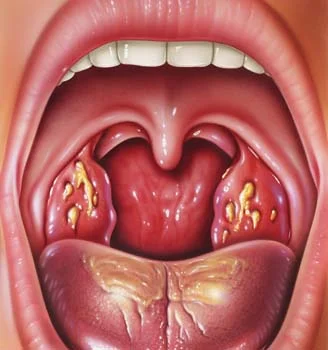Throat
Canker Sores
Canker sores are painful recurrent ulcers of the mouth which appear on the lips, gums, inner cheeks, tongue, palate and throat. They are small, shallow depressions in the lining of the mouth with sharp borders covered by a gray membrane and surrounded by a intense red halo. Tingling and burning sometimes precedes them by a day. During the first two to three days, canker sores are painful and can interfere with eating and drinking. Most sores heal without scarring within two weeks.
The cause of canker sores is not known but stress appears to be a contributing factor. Cankers don’t look quite like fever blisters and their treatment differs too. I suspect a viral cause will be found in the future.
Because of a accompanying pain a child may not drink or eat normally. It is important to maintain a good intake of liquids, but citrus or salty foods will irritate the sores. I occasionally prescribe or recommend local pain relievers. Speak to your dentist too. Dentists deal with the mouth, and these are common problems dentists feel comfortable treating. Orabase™ works well but is not tolerated by young children because it feels gritty.
A similarity with fever blisters is the recurrence rate for both. Most people have canker sores more than once. If you notice a fever, bad odor or facial swelling, please call the office because a secondary infection can be present.
Tonsilitis
Tonsillitis is an inflammation of the lymph tissue in the throat. It is a common infection in childhood and there should be no alarm. The exception would be if the tonsils were so swollen that it interfered with the airway and prevented normal breathing. This is noted by an anxious expression and persistent drooling with difficulty swallowing. If you notice this with decreased alertness, I suggest a call during office hours or evaluating through an after-hours care facility or emergency room.
Most tonsillar infections are caused by viruses and will not respond to antibiotics. If there is a history of exposure to strep throat or it is suspected, then an in-office screening test may be able to identify the cause. An identified strep infection will be treated with an appropriate antibiotic and improvement expected in 1-2 days.
Reviewed 5/1/2024

